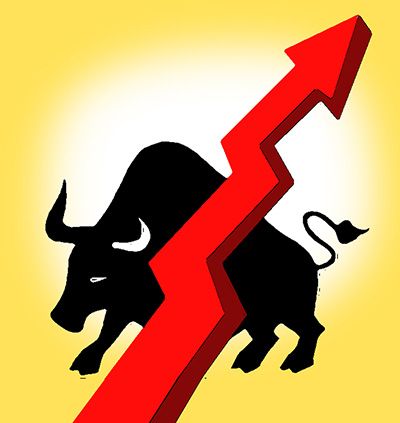Ratings or Rolling Returns?
How do you pick a mutual fund scheme that suits your needs?
Sanjay Kumar Singh find out.
Illustration: Dominic Xavier/Rediff.com
 With as many as 2,315 mutual fund schemes, individual investors find it difficult to choose the right fund on their own.
With as many as 2,315 mutual fund schemes, individual investors find it difficult to choose the right fund on their own.
Many retail investors merely compare the trailing one-, three- and five-year returns of a fund with that of its benchmark while selecting.
This is not an adequate way of selecting funds.
The investor's goal should be not to choose a fund that has done well over particular time horizons, but one that has been a consistent performer over different horizons.
Selecting a fund that can deliver sound returns with lower volatility should be another priority.
Ratings can help investors achieve these objectives. But, to profit from these, investors need to pick carefully the agency whose ratings they choose to follow.
Best among peers
For retail investors, it is difficult to figure which category a fund belongs to, and which are its peers against whom performance should be compared.
A fund's name doesn't always indicate its category correctly.
Ratings agencies categorise funds based on their underlying portfolio, and then tell you where a fund stands within its category.
Ratings of some agencies make use of rolling returns, as opposed to point-to-point returns for evaluating performance.
Rolling returns offer a better picture of a fund's consistency.
Rating agencies also use risk-adjusted returns as one of their criteria.
How much return a fund manager has produced for each unit of risk taken.
Thus, using fund ratings can help investors select funds that are more consistent and less volatile.
Shortcomings of ratings
Ratings of some agencies experience sharp swings.
A five-star rated fund today could dip and become a two-star rated one a couple of months later.
This happens either because the rating agency uses point-to-point returns or because it gives greater weight to shorter-term performance in its methodology.
"If a retail investor bases his investment decisions on ratings that swing sharply, he will have to move in and out of funds every few months. This will result in excessive churning of his portfolio and lead to higher costs," says Vidya Bala, head of research, Fundsindia.com, which has recently launched its ratings.
Another shortcoming of the rating process used by some agencies is that they make use of point-to-point returns.
A superior way to evaluate a fund's performance is to use rolling returns.
"Point-to-point return tells you how a fund has performed over the past six months, one year, or three years. Rolling returns give you the average of a fund's performance over multiple six-month, one-year, or three-year periods," says Vishal Dhawan, chief financial planner, Plan Ahead Wealth Advisor.
Rolling returns are less affected by a fund's short-term out- or under-performance.
Look beyond ratings
Ratings can tell you how good a fund is vis-a-vis its peers.
When making investment decisions, investors need to first choose the right fund categories that suit their needs.
This depends on factors like her/his risk appetite, investment horizon, valuations, market cycle, and so on.
Ratings can tell an investor which are the best funds within the mid- and small-cap space.
If the investor has only a moderate risk appetite, s/he might be better off sticking to only large and multi-cap funds and avoiding mid- and small-cap funds altogether.
Or if the mid-and small-cap space has become very expensive, investors could have sub-optimal returns even if they choose the best funds within this category.
So, they also need to keep an eye on valuation ratios like price to earnings, price to book value, and dividend yield.
Similarly, an investor might choose the best funds within the medium and long-term gilt category based on ratings, but this will not be very helpful if s/he enters it when interest rates have already bottomed out.
What should you do
Now that ratings are available from a number of agencies -- Morningstar, Value Research, CRISIL and Fundsindia -- investors should take the trouble to study the methodologies followed by each.
"Ratings of some agencies could be based on simplistic parameters, while those of others could be more comprehensive," says Dhawan.
Some agencies explain the methodology they follow on their Web sites. Go through these and then choose an agency based on the criteria outlined above.
Second, it might not be enough to use quantitative ratings alone.
These ratings are number-based and they tell you how a fund has done in the past.
To be able to assess whether that performance was a flash in the pan or the result of the right systems and processes being followed at a fund house, you need qualitative ratings.
Only if it is the latter can good performance be sustained in the future.
"Qualitative rating is a more forward-looking assessment. It should be used to supplement quantitative ratings when trying to assess a fund's prospects," says Kaustubh Belapurkar, director, manager research, Morningstar Investment Advisor India.
Investors should also track a few other parameters.
"Track other scheme-related information such as expense ratio, changes in scheme attributes and fund managers, and corporate actions like scheme mergers and dividend history, which are available in the public domain," says Jiju Vidyadharan, director, funds and fixed income, CRISIL Research.
Also, having made the investment, he suggests investors should keep track of changes in fund rankings and weed out non-performers.











